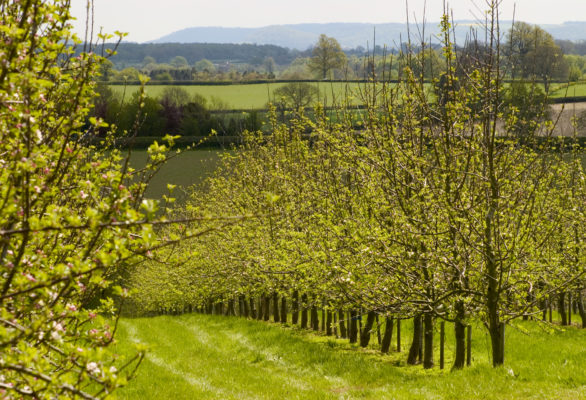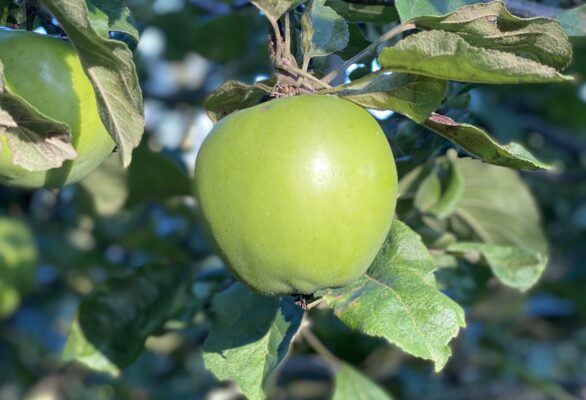Herefordshire is the home of apples – both for cider fruit and for desert apples. Staff working across the county were often paid some of their wages in Scrumpy which may not have been a particularly good idea for planting in straight lines! Historically orchards have been planted here for generations as the soils are perfect and the gently rolling hills provide the perfect terrain. At White Heron we mainly grow cider fruit but we also have a small orchard of speciality culinary varieties with which we make our own delicious fresh-pressed apple juice. We grow some of our varieties for Bulmers Cider in Hereford, and some for Aspalls Cider in Suffolk. For other parts of the farm go to whole farm, environment, blackcurrants, apples, vineyards, other enterprises and White Heron Drinks.



